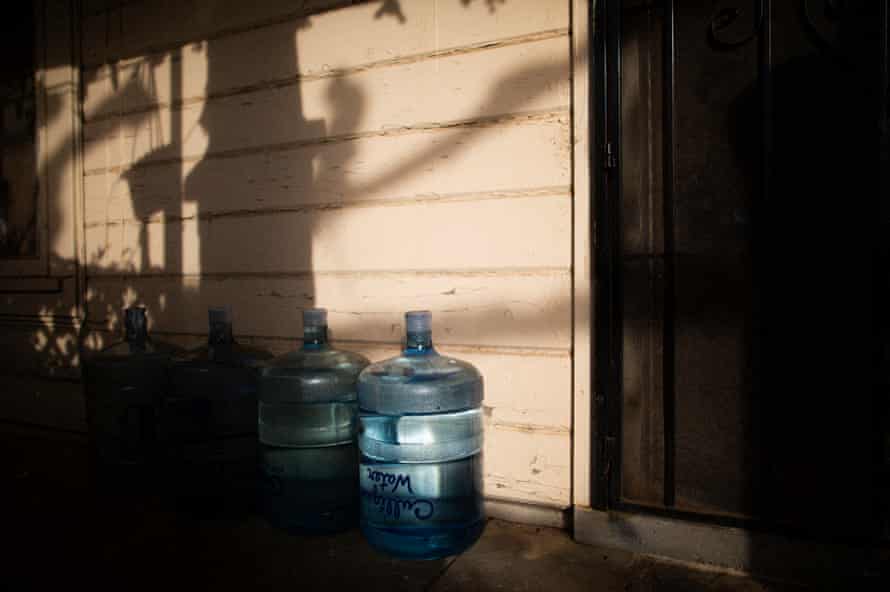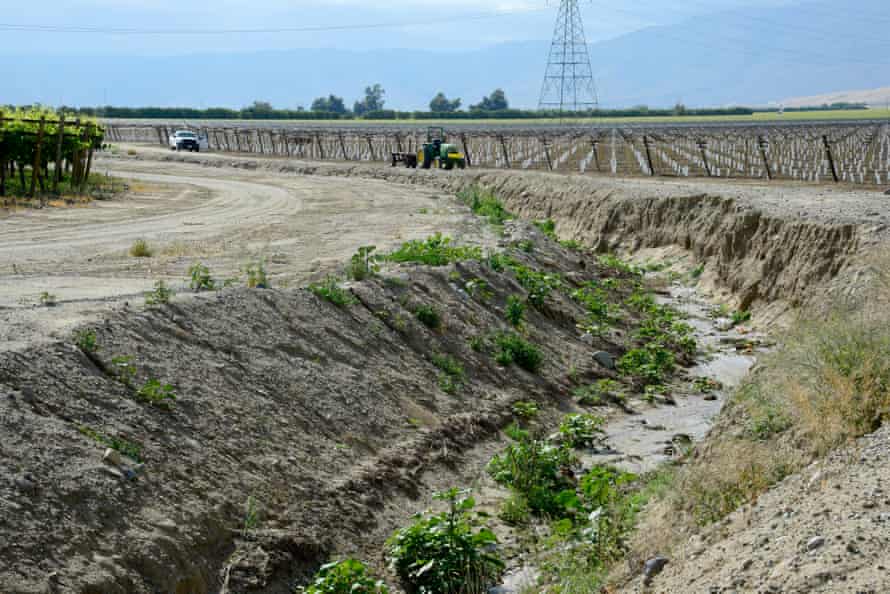Everything You Need to Know About Esports Mangament 2019
California began regulating surface water in rivers and streams in 1914, simply it took the country another 100 years to look surreptitious.
In 2014, for the first time in its history, California passed a law regulating the use of groundwater – the resource on which 85% of its population and much of its $50bn agriculture industry rely.
This twelvemonth marks the first big deadline for the Sustainable Groundwater Management Human activity (Sgma), as dozens of agencies complete initial plans to protect overdrafted h2o resources.
Hither'south what y'all need to know:
What were groundwater rights similar before Sgma?
California's underground basins are a primal component of the country's complex and fragile h2o organization. For all of the land's history, the rights to groundwater had come up with country buying: if 1 had an access point to an aquifer, i had the right to drill into information technology and pump out its contents. No regulatory entity would rails, permit solitary limit how much water whatsoever pump sent up.
This anarchy persisted for decades. Aquifers were drained lower and lower and the country to a higher place them sank – a phenomenon called "subsidence" that wreaks havoc on infrastructure and compresses the soil, making it even more difficult for some aquifers to recharge with water.

What prompted lawmakers to take action?
Pumping reached a fever pitch during the drought that began in 2011, when growers beyond California received less and less water from the rivers and canals meted out by regulatory agencies and irrigation districts. To brand upwardly the difference, farmers who could afford information technology drilled new wells and lowered existing ones.
Aquifers became increasingly overdrawn as more and more than water was pumped out without being replaced by rainfall. As the drought continued for the side by side six years, smaller farmers and domestic h2o users with more shallow personal wells found the groundwater had retreated past their pumps, many of which at present sent up only sand.
The Sustainable Groundwater Management Deed or Sgma (pronounced "sigma") aimed to address this seemingly sudden crunch, which in reality was over a century in the making. The packet of three bills was passed over vocal criticism from some local governments in the Central Valley – California'south agronomical heartland – agribusiness and the California Subcontract Bureau Federation, which warned of "huge long-term economic impacts".
What does Sgma practise?
Sgma essentially upholds the right to groundwater access and use, but considers h2o to exist a shared asset and imposes rules on its employ. Those restrictions likewise apply to California'southward powerful agriculture industry, which uses roughly 80% of all the land's water.
Sgma relies on local oversight. The police established local groundwater sustainability agencies to oversee the evolution and implementation of plans to manage groundwater resources in California's 450 underground basins. The outset round included more than than 260 agencies for more than 140 of the land's most high-priority basins, 21 of which are "critically overdrafted". Of those, xi are in the San Joaquin Valley.
Those agencies are tasked with developing and overseeing groundwater sustainability plans, with the power to gather data on how much h2o is being pumped and where and set limits on it. Analysts accept estimated that between those limits on groundwater pumping and less available water due to climate change, anywhere between 500,000 and 1m acres of California farmland volition have to be fallowed.
Many of the groundwater sustainability agencies in the Central Valley share their borders and lath members with the local irrigation districts, reflecting agriculture'south interests. Just these agencies and plans must "consider the interests of" beneficial users, including groundwater rights holders and disadvantaged communities served by private wells and pocket-size community water systems. Those communities won't face pumping limits like their farming neighbors under Sgma, but they will face up impacts nonetheless. Some of the sustainability plans call for allowing aquifers to drain to the worst levels seen during the drought before pumping limits would be imposed – levels that left many residents without any water at all.

When does it become into result?
Although Sgma was passed in 2014, agencies in specially loftier-priority, overdrafted basins had until 31 January 2020 to file their plans to make groundwater resources sustainable past 2040. Those plans are discipline to review and approval by the state'southward department of water resource, and will be reassessed every five years.
That doesn't mean the sustainability process volition begin right abroad. Instead of imposing immediate limits on new wells and water pumping, the plans will "glide" toward sustainability in 2040.
Why does Sgma matter?
A framework for healthy groundwater resources and storage is key to California's ability to weather the more extreme drought and flood cycles the state volition experience due to climatic change. With less water stored in the class of snowpack in the Sierra Nevada mountains, at that place will be less surface water to run across agricultural demand – putting withal more pressure on overdrafted aquifers.
Sgma was widely hailed every bit a necessary and long-overdue regulatory step toward making California'due south water usage remotely sustainable. But it volition also have significant impacts on the state's agriculture industry, rural communities and endangered wetlands.
What else is California doing to solve its h2o bug?
Over the terminal near-decade of drought and recovery, California has tried to plan for a drier future. Just weeks later the country passed Sgma in 2014, voters approved a $seven.5bn h2o bail to pay for water infrastructure upgrades for storage, ecosystem protection and drinking water. It was not enough.
More than 1 one thousand thousand state residents live with water too toxic to drinkable. In 2019, the state passed the Rubber and Affordable Drinking H2o Fund, which allocates $1.4bn over 11 years to projects and programs to bring clean water to disadvantaged communities statewide.
This January, Gavin Newsom, the California governor, released his H2o Resilience Portfolio, "a comprehensive strategy to build a climate-resilient water system".
"California's water challenges are daunting, from severely depleted groundwater basins to vulnerable infrastructure to unsafe drinking water in far too many communities. Climatic change magnifies the risks," Newsom said in announcing the plan.
Source: https://www.theguardian.com/environment/2020/feb/27/california-groundwater-sgma-law-what-does-it-mean
0 Response to "Everything You Need to Know About Esports Mangament 2019"
Postar um comentário